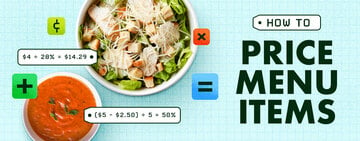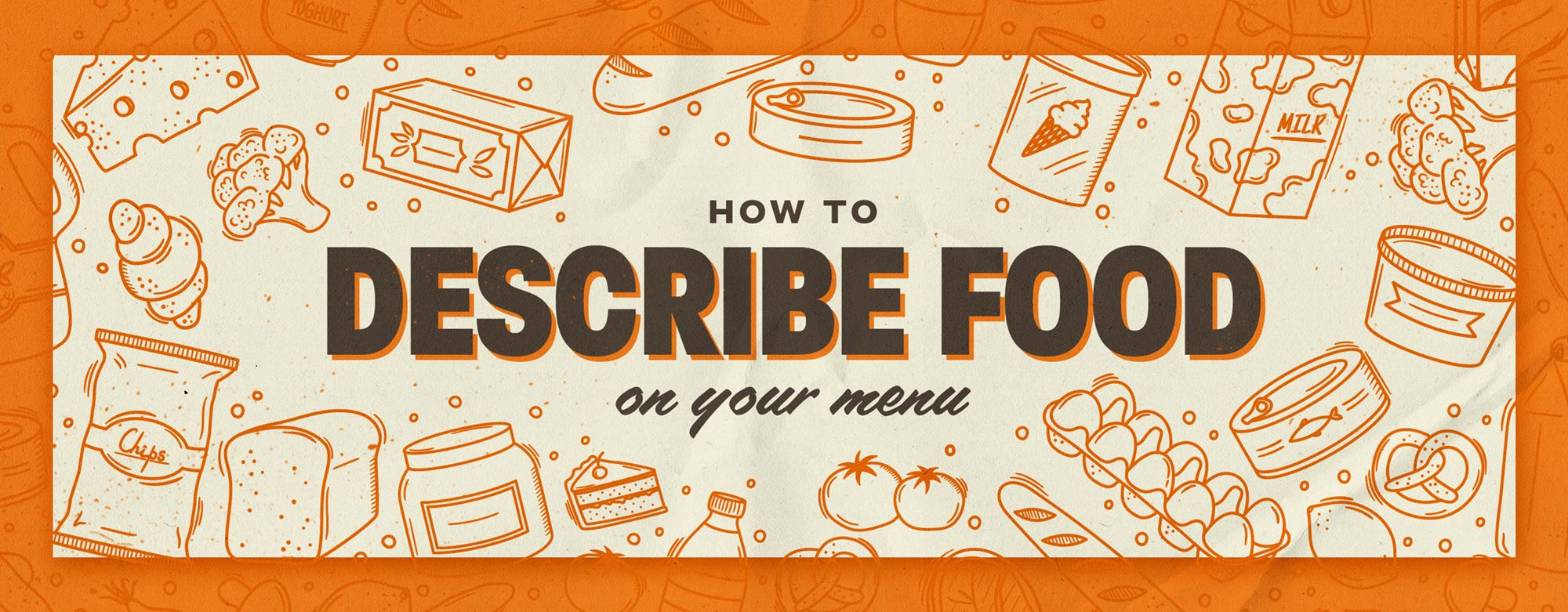
73 Words & Adjectives to Describe Food
Last updated on 8/11/2023The words used to describe the food on your menu are just as critical as food presentation. It can mean the difference in converting people browsing the internet for places to eat to new customers or in upselling your more expensive menu items. There are many words to describe food that help convey its taste, texture, and preparation method in an appealing manner. Use our list of food adjectives below to find the best way to describe the food on your menu.
Words to Describe Taste
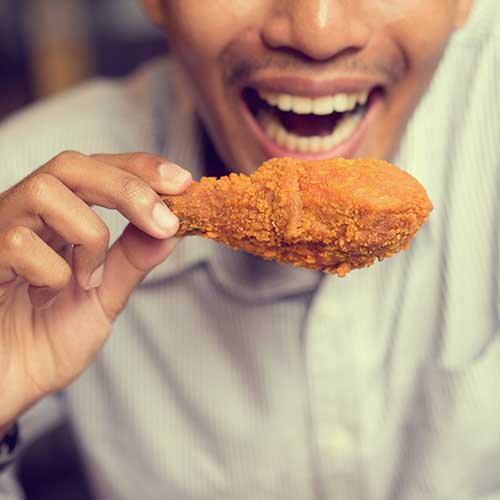
The flavor of food is what customers focus on most when they are deciding what to eat. How you engineer your menu can help build anticipation, and a good food description could convince a hesitant customer to try something new. With this in mind, be precise and thorough when choosing words to describe your food's flavor.
Here are some words used to describe the taste of food:
- Acidic: Food with a sharp taste. Often used to refer to tart or sour foods as well.
- Bitter: A tart, sharp, and sometimes harsh flavor.
- Bittersweet: A less harsh taste than bitterness. Couples tartness with sweetness.
- Briny: Another word for salty. Often used to describe pickled foods.
- Citrusy: A bright flavor like that of lemons, limes, oranges, and other citrus fruits.
- Cooling: A taste that mimics the feeling of cold temperature. Often used to describe mint.
- Earthy: Reminiscent of fresh soil. Often used to describe red wines, root vegetables, and mushrooms.
- Fiery: A taste that feels as though it gives off heat. Another word for spicy.
- Fresh: A light and crisp taste. Often used to describe produce or herbs.
- Fruity: Any taste reminiscent of sweet fruit flavors.
- Full-bodied: Rich flavor that can feel heavy in the mouth. Often used to describe wines.
- Herbal: A bright, fresh, or sometimes earthy taste created by the incorporation of herbs.
- Honeyed: A sweet or candied taste that may be reminiscent of honey.
- Nutty: Any taste similar to the flavors of nuts. Often used to describe cheeses.
- Rich: A full, heavy flavor. Often used to describe foods containing cream.
- Robust: A rich taste with some earthiness. Often used to describe wines or aged liquors.
- Savory: An umami taste. Often used to describe meaty, earthy foods and broths.
- Sharp: A harsh, bitter, or tart taste. Often used to describe acidic foods.
- Smoky: A smoky taste is reminiscent of the smell of smoke.
- Sour: A biting, tangy, tart flavor.
- Spicy: A burning taste from hot spices.
- Sweet: A sugary flavor.
- Tangy: A tart, biting taste that feels tingly in the mouth.
- Tart: A sharp, bitter, or sour flavor. Often used to describe acidic foods.
- Yeasty: An earthy taste reminiscent of yeast. Often used to describe beer and bread.
- Woody: An earthy, sometimes nutty taste. Often used to describe coffees or cheeses.
- Zesty: A fresh, vivid, or invigorating flavor.
Words to Describe Texture
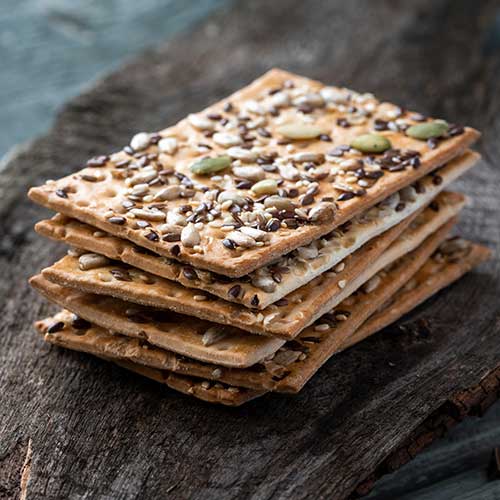
Another consideration when describing your food is texture. Properly using food adjectives to describe mouthfeel helps your guests to imagine what it will be like to eat your food before they order it.
Here are some words used to describe the texture of food:
- Airy: A light, pillowy texture often created by the incorporation of air.
- Buttery: A smooth and creamy texture similar to that of butter.
- Chewy: The texture of food that needs to be chewed thoroughly before swallowing. Can be light and bouncy or heavy and sticky.
- Creamy: A smooth and rich texture that usually comes from the incorporation of dairy.
- Crispy: A light texture with a slight crunch.
- Crumbly: The texture of food with a loose structure that falls apart into small pieces or crumbs.
- Crunchy: A firm, crisp texture often identified by the sharp, audible noise that the food makes when being eaten.
- Crusty: The texture of food with a hard outer layer and soft interior.
- Delicate: A light, fine texture that may come apart easily.
- Doughy: A soft and heavy texture that is often coupled with pale coloring.
- Fizzy: A texture brought on by the presence of many small bubbles, usually referring to carbonated liquids.
- Flaky: A light texture characterized by layers that come apart during eating.
- Fluffy: A light and airy texture.
- Gooey: A viscous, sometimes sticky texture arising from the presence of moisture in a dense solid food.
- Hearty: A firm, robust texture.
- Juicy: A succulent, tender texture characterized by the presence of liquid in solid food.
- Silky: A fine, smooth texture characterized by a sleek feel in the mouth.
- Sticky: A texture characterized by gluiness in the mouth.
- Smooth: A consistent texture free of grit, lumps, or indentations.
- Succulent: A tender, juicy texture.
- Tender: A soft texture that is easy to break down.
- Velvety: A smooth and rich texture.
- Baked: Food cooked in an oven, often resulting in a browned or crispy outer coating.
- Blanched: Food scalded in boiling water and then moved to cold water to stop cooking. Results in a softened texture.
- Blackened: Food dipped in butter and coated with spices before being cooked in a hot pan, resulting in a blackened appearance.
- Braised: Food that is briefly fried in a small amount of fat and then slowly stewed in a covered pot. Results in a seared, crispy exterior coupled with a tender interior texture.
- Breaded: A breaded food is coated with a breadcrumb mixture or batter that is then baked or fried into a crispy outer layer.
- Broiled: Food cooked with intense radiant heat, as in an oven or on a grill. Often results in a darkened appearance and crispy texture.
- Caramelized: Food slow-cooked until it is browned, nutty, and sweeter.
- Charred: Food that is grilled, roasted, or broiled and gains a blackened exterior and smoky flavor.
- Fermented: Food introduced to bacteria, yeast, or another microorganism to produce organic acids, alcohols, or gases. May result in a pungent, biting flavor.
- Fried: Food that is cooked by submerging partially or fully into hot oil. Often results in a crispy or crunchy texture and golden color.
- Glazed: Food with a flavorful coating dripped or brushed onto its surface. May result in a glossy appearance and thin, crisp outer layer.
- Infused: Food steeped in liquid with another ingredient to extract the flavor of the ingredient. Often used with herbs.
- Marinated: Food (usually meat) that has been soaked in liquid containing flavorful ingredients like herbs, spices, vinegar, and oil.
- Poached: Food that has been cooked in nearly boiling liquid. Often results in a tender, moist texture.
- Roasted: Food that has been cooked with dry heat in an oven or over a fire. Often results in a browned exterior and crisp coating.
- Sauteed: Food that has been cooked quickly in a small amount of fat.
- Seared: Food that is cooked in a small amount of fat until caramelized and then finished by roasting, grilling, or another method. Results in a crisp outer texture and tender interior.
- Smoked: Smoked food is food that is cooked or preserved by long exposure to smoke from smoldering wood. Results in a distinctive, bold flavor.
- Whipped: Food that has been beaten to incorporate air. Often results in a light, fluffy texture.
- Dry vs. crispy: Chicken with a dry breading compared to Chicken with a crispy breading
- Greasy vs. velvety: Pasta in a greasy sauce compared to Pasta in a velvety sauce
- Sugary vs. honeyed: Pears with a sugary drizzle compared to Pears with a honeyed drizzle
- Burned vs. blackened: Burned salmon compared to Blackened salmon
- Tough vs. hearty: A piece of tough bread compared to A piece of hearty bread
- Mushy vs. tender: A mushy crabcake compared to A tender crabcake
Words to Describe Food Preparation Method
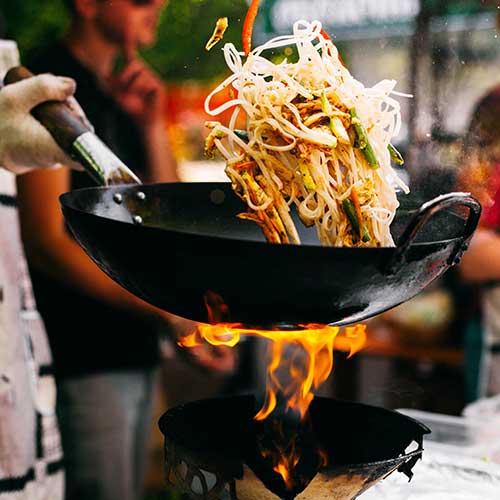
Describing how your food is prepared will give customers a better picture of its flavor, texture, and appearance.
Here are some words that indicate preparation and cooking methods:
Positive Food Adjectives
Describing food with words that have a negative connotation can accidentally influence your customers into passing over a menu item. Before you use a descriptor word in your menu, take a moment to think about how that word is commonly perceived. Does it bring a positive image to mind, or is it unappetizing? Instead, use adjectives synonymous with the negative word with a more positive connotation. They are often more specific and give customers a more precise visual of the item.
Here are some examples of negative descriptive words and positive food adjectives you can use to replace them:
When searching for the right words to describe the food on your menu, remember that you have plenty of options to describe its taste and appearance. Use words appealing enough to catch a customer's eye, common enough to explain your food at a glance, and specialized enough that you don't have to resort to cliches. Next time you add a new dish or want to overhaul your menu, consider how a food's description can be a tool for attracting new customers and higher profits.

